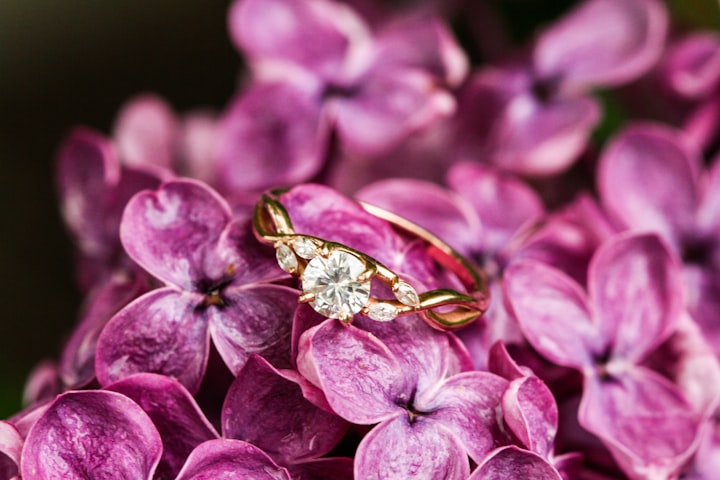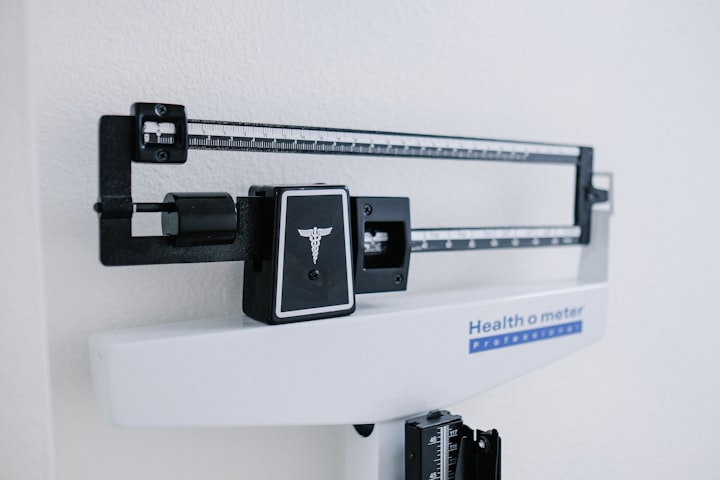Diamonds are a Bad Friend
De Beers Keeps Pushing That Overhyped Rock

We've all heard the phrase "diamonds are a girl's best friend." If diamonds are a friend, they are the worst type of friend: the type who takes thousands of dollars and never pays it back, never does anything helpful, and constantly tries to remind you that they are perfect and you are not.
As I was listening to my daily news briefing on Alexa earlier today, a Bloomberg Market Money story had my brain churning. Sanctions on Russia have created a diamond shortage for De Beers, causing the price of engagement rings to go up. My first thought was “So? Is this really newsworthy?” My second thought was “In our current economy, this is what we are worried about?”
After my initial thoughts, I started considering this story more. I never wanted a diamond, which I know puts me at odds with a lot of other women. I always felt they were just an overpriced rock that symbolized an outdated time that is mostly dead. I do like blue diamonds, but, again, the price is just not worth it to me. The idea that a man should spend thousands of dollars on a piece of jewelry always seemed wasteful.
When my husband and I got engaged, I looked at blue diamond rings. Most were gaudy and had an excess of smaller diamonds surrounding the main stone, which of course drove the price up. Never mind the fact that I thought they were hideous and unnecessarily flashy, my job at the time of our engagement was in a busy wine shop at the local Renaissance Faire, so any ring would take some abuse.
I had found one I liked and we even went to Zales to ask about it. The rude saleswoman told me that ring was online only and brushed off my questions about their ring insurance since the ring was only eight hundred dollars, pathetic in comparison to their normal rings that were well over double that price. My fiancé and I discussed it—neither of us made much money then, and even the sale price of six hundred dollars was too much to justify. I instead picked three silver, “lab-created sapphire” rings on Amazon and sent the links to my fiancé. My engagement ring cost fifty-five dollars, including the old “one-day” Amazon Prime shipping. The matching wedding band cost me another forty-seven dollars a year and a half later.
The real question is: why are diamonds demanded in an engagement? There are plenty of nice rings that would serve the purpose of an engagement ring without the excess expense. The truth is De Beers had good marketing in the 1940s, creating an advertising campaign to secure profits from a gem that was not in high demand. Ironic that the company that created the diamond craze is now struggling with a shortage. Actually, no, it isn’t ironic at all—it’s business.
According to BBC, De Beers is also responsible for the idea that the price of an engagement ring should be the equivalent of two (or three) months' salary. Here is where the disconnect lies between jewelry companies and women like me: wouldn’t that money be better spent elsewhere? If a man is going to spend six thousand dollars on a ring, would that money not be better spent on housing? Or new furniture? What woman would not want better financial and housing stability over an overpriced rock? That is nearly enough for a down payment on a decent starter home, and yet it is wasted on a piece of jewelry.
The truth is a lot of women fell into the marketing ploy that a man only cares if he spends a lot of money on material possessions for the woman. As stated in the previously linked BBC article, De Beers’ advertising created the “two month’s salary” standard in the 1980s, suggesting that a large ring would tell the woman her fiancé makes a lot of money, thereby creating financial security. But does that matter anymore? How many women do not know how much their boyfriend (or girlfriend) makes before getting engaged?
In today’s society, why do people still spend so much on engagement rings? It is the perfect example of wastefulness, and yet so many people still do it. We’ve all heard the stories over the past few years: Millennials and Gen-Z are not buying as many diamonds simply because they do not make as much money. However, thanks to an episode of Explained on Netflix, there is growing concern over the processes to obtain diamonds, making environmentally mindful individuals wary of diamonds. Lab-grown diamonds are gaining in demand, but mined diamonds still hold the majority of sales. It is a step in the right direction...if you want to hold onto the notion that only a diamond can be used to express love.
So let’s be realistic: the diamond market is a marketing gimmick created by a company that was struggling during the depression. Unfortunately, too many women still fall into this trap, stuck in an old-fashioned idea created by a corporation. Even better, the company that created this entire craze is now grumbling because the sanctions against Russia for invading Ukraine are affecting their diamond business. Never mind the Ukrainians who had to flee for their lives—diamonds are going up in price and are harder to get. That is the perfect example of appalling priorities.
Okay, so De Beers likely is not so much “grumbling” about it, but the diamond price increase for De Beers was the featured story on my market news briefing. In the days of gas price increases, baby formula shortages, and workforce issues (see my article "Everyone Is Hiring," but it's Still Hard to Find a Job), the only thing that was newsworthy in the business world on this particular Tuesday was De Beers raising prices. Really the only reason for that is exactly why De Beers is still in business: marketing.
When an individual decides to get married, the most important part should not be the engagement ring, but rather the future of the relationship. Where will you live? Will there be children? How many pets are too many? Couples would be better to spend those thousands of dollars on their future rather than a piece of rock with a fictitious value dictated by a jewelry company. Maybe your intended would prefer a sapphire or garnet. Maybe your intended does not like stones at all, favoring simple designs that will not get caught on things. Maybe your intended would rather have an engagement bracelet, or a kitten, or a down payment on a house where you will live with your future children.
I could not write this without also mentioning that the classic “family” of the 1950s and 1960s is mostly non-existent. Wives no longer rely on their husband’s sole income and tend to seek their own careers. Most families need two incomes to pay the bills these days, emphasizing the wastefulness of spending thousands on an engagement ring. And what if the woman is the one proposing marriage, as I did? Why should the decision of whether to get married or not begin with the man? Not all men are comfortable with that kind of pressure, and many women are confident enough to take the risk.
We do not live in the days of June Cleaver anymore. Most women are not staying at home cleaning the house in a dress while the men go off to earn the money. Women are empowered and want to work, and men can just as easily be stay-at-home dads. Couples are different, from the assertive woman married to the shy geek to the two happily married men raising a child together. Everything else has changed, so why has the marketing campaign of one company created such an unmovable image of a shiny rock?
When my husband and I got engaged, I had asked him to marry me. There was no fancy ceremony or memorable moment. I loved him and he loved me. I had been extremely ill and simply decided I did not want to wait any longer to ask—I had already postponed it two months out of fear he would run away. I tend to scare men with my confidence, intelligence, and independence. We would split the cost of an engagement ring for me, but neither of us liked the idea of spending so much. We are both gamers, and the thought that a ring would cost more than a PlayStation 4 snapped me out of the mesmerizing sparkle of a blue diamond.
As I mentioned before, my wedding set—an engagement ring and matching wedding band—cost just a little over one hundred dollars, including shipping. Unfortunately, I developed a minor allergy to silver and was getting blisters on my ring finger from the set (which would cause one of my employees to theorize that I was a werewolf). I then bought something I have always wanted: a cobalt steel ring. It was one hundred dollars just for the wedding band—a plain band with very little design—and I have had no problems since. My original set resides in my jewelry armoire, a keepsake forever of when we got married.
Truthfully, the ring is not the marriage, it is just an item. The same is easily said about the wedding itself, though that is a different story for another day. The marriage is what matters, and it is far more precious than some polished rock pushed by a jewelry company.
About the Creator
Jen Sullivan
I am a gamer, a geek, a writer, an entrepreneur, and a gardener, among many things. I have a lot of knowledge and opinions to share with the world, along with creations from my chaotic mind.






Comments
There are no comments for this story
Be the first to respond and start the conversation.